

Our Courses

Design and Interpretation of Clinical Trials
Clinical trials are experiments designed to evaluate new interventions to prevent or treat disease in humans. The interventions evaluated can be drugs, devices (e.g., hearing aid), surgeries, behavioral interventions (e.g., smoking cessation program), community health programs (e.g. cancer screening programs) or health delivery systems (e.g., special care units for hospital admissions). We consider clinical trials experiments because the investigators rather than the patients or their doctors select the treatment the patients receive.
-
Course by

-
 Self Paced
Self Paced
-
 10 hours
10 hours
-
 English
English

Conversational English Skills
Do you want to communicate with English speakers fluently? Welcome to our course. The course consists of 6 units with different topics: meeting new people, the people in your life, eating in and eating out, the reason to learn English, good times and bad times, and hobbies. From this course, you will have a good knowledge of conversational English skills in your daily life. We invite you to learn with our teachers and friends from different countries in the videos, such as the United States, the United Kingdom, Ireland, Canada, Australia, and Columbia. Are you ready? Let’s go!
-
Course by

-
 Self Paced
Self Paced
-
 9 hours
9 hours
-
 English
English

University Studies for Student Veterans
The skills you learned in the military will go a long way toward helping you succeed in college, but if you’re looking for some extra support – or an academic tune-up – then you’ll find it in this course. We know that the culture of higher education is different from the culture of the military in meaningful ways, and we also know that one of the keys to excelling in college–especially for student veterans–is learning to navigate these differences successfully, right from the very start. This course aims to help you do just that.
-
Course by

-
 Self Paced
Self Paced
-
 13 hours
13 hours
-
 English
English

Introduction to NoSQL Databases
Get started with NoSQL Databases with this beginner-friendly introductory course! This course will provide technical, hands-on knowledge of NoSQL databases and Database-as-a-Service (DaaS) offerings. With the advent of Big Data and agile development methodologies, NoSQL databases have gained a lot of relevance in the database landscape. Their main advantage is the ability to handle scalability and flexibility issues modern applications raise.
-
Course by

-
 Self Paced
Self Paced
-
 18 hours
18 hours
-
 English
English

Introduction to User Experience Principles and Processes
This UX course provides an introduction to the fields of UX research and design. Learners will gain an understanding of what is involved in UX research, including conducting interviews, evaluating systems, and analyzing systems using principles of good design. Learners will also learn about the work involved in UX Design, including the generation of promising design solutions and the creation of prototypes at multiple levels of fidelity.
-
Course by

-
 Self Paced
Self Paced
-
 12 hours
12 hours
-
 English
English

Introduction to Containers w/ Docker, Kubernetes & OpenShift
Take the next step in your software engineering career by getting skilled in container tools and technologies! The average salary for jobs that require container skills is $137,000 in the US according to salary.com, making Devops professionals and developers with these skills highly in demand. More than 70 percent of Fortune 100 companies are running containerized applications. But why? Using containerization, organizations can move applications quickly and seamlessly among desktop, on-premises, and cloud platforms.
-
Course by

-
 Self Paced
Self Paced
-
 13 hours
13 hours
-
 English
English

Six Sigma Principles
This course is for you if you are looking to learn more about Six Sigma or refresh your knowledge of the basic components of Six Sigma and Lean. Six Sigma skills are widely sought by employers both nationally and internationally. These skills have been proven to help improve business processes and performance. This course will introduce you to the purpose of Six Sigma and its value to an organization. You will learn about the basic principles of Six Sigma and Lean.
-
Course by

-
 Self Paced
Self Paced
-
 13 hours
13 hours
-
 English
English

Data Science in Real Life
Have you ever had the perfect data science experience? The data pull went perfectly. There were no merging errors or missing data. Hypotheses were clearly defined prior to analyses. Randomization was performed for the treatment of interest. The analytic plan was outlined prior to analysis and followed exactly. The conclusions were clear and actionable decisions were obvious. Has that every happened to you? Of course not. Data analysis in real life is messy. How does one manage a team facing real data analyses? In this one-week course, we contrast the ideal with what happens in real life.
-
Course by

-
 Self Paced
Self Paced
-
 7 hours
7 hours
-
 English
English
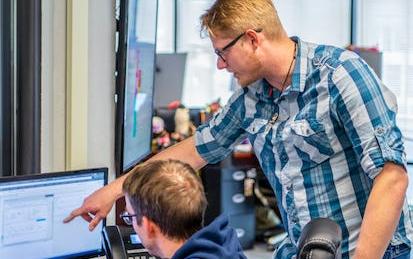
Crash Course on Python
This course is designed to teach you the foundations in order to write simple programs in Python using the most common structures. No previous exposure to programming is needed. By the end of this course, you will understand the benefits of programming in IT roles; understand basic Python syntax; explore different code editors and developer environments; be able to write simple programs using Python; figure out how the building blocks of programming fit together; and combine all of this knowledge to solve a complex programming problem.
-
Course by

-
 Self Paced
Self Paced
-
 27 hours
27 hours
-
 English
English

Exploring and Preparing your Data with BigQuery
In this course, we see what the common challenges faced by data analysts are and how to solve them with the big data tools on Google Cloud. You’ll pick up some SQL along the way and become very familiar with using BigQuery and Dataprep to analyze and transform your datasets.
-
Course by

-
 Self Paced
Self Paced
-
 8 hours
8 hours
-
 English
English
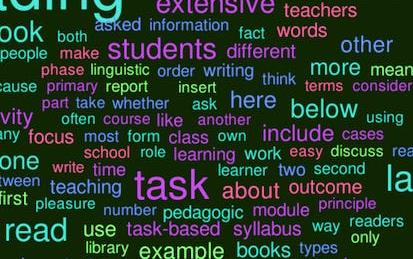
Teaching EFL/ESL Reading: A Task Based Approach
This course explores ways of teaching reading skills in English as Second and Foreign Language (ESL/EFL) using a task-based approach. You will be introduced to the concept of task and the key principles of task-based language teaching (TBLT) and learning. TBLT uses communicative tasks as the key unit for creating language learning activities. You will also examine the role of reading in real-life and in second and foreign language teaching and current thinking about the interface between TBLT and second language reading.
-
Course by

-
 Self Paced
Self Paced
-
 23 hours
23 hours
-
 English
English

Algorithms, Data Collection, and Starting to Code
This course starts you on your journey learning about computational thinking and beginning C programming. If you’d like to explore how we can interact with the world in a rigorous, computational way, and would also like to start learning to program, this is the course for you! You may have heard lots of talk about computational thinking recently, but if you ask 10 different people what it is you’ll probably get 10 different answers. Rather than trying to define computational thinking, we’ll just say it’s a problem-solving process that includes lots of different components.
-
Course by

-
 Self Paced
Self Paced
-
 15 hours
15 hours
-
 English
English
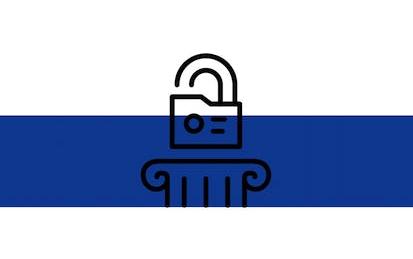
Foundations of Cybersecurity
This is the first course in the Google Cybersecurity Certificate. These courses will equip you with the skills you need to prepare for an entry-level cybersecurity job. In this course, you will be introduced to the world of cybersecurity through an interactive curriculum developed by Google. You will identify significant events that led to the development of the cybersecurity field, explain the importance of cybersecurity in today's business operations, and explore the job responsibilities and skills of an entry-level cybersecurity analyst.
-
Course by

-
 Self Paced
Self Paced
-
 15 hours
15 hours
-
 English
English

Improving your statistical inferences
This course aims to help you to draw better statistical inferences from empirical research. First, we will discuss how to correctly interpret p-values, effect sizes, confidence intervals, Bayes Factors, and likelihood ratios, and how these statistics answer different questions you might be interested in. Then, you will learn how to design experiments where the false positive rate is controlled, and how to decide upon the sample size for your study, for example in order to achieve high statistical power.
-
Course by

-
 Self Paced
Self Paced
-
 28 hours
28 hours
-
 English
English

Natural Language Processing in TensorFlow
If you are a software developer who wants to build scalable AI-powered algorithms, you need to understand how to use the tools to build them. This Specialization will teach you best practices for using TensorFlow, a popular open-source framework for machine learning. In Course 3 of the DeepLearning.AI TensorFlow Developer Specialization, you will build natural language processing systems using TensorFlow. You will learn to process text, including tokenizing and representing sentences as vectors, so that they can be input to a neural network.
-
Course by

-
 Self Paced
Self Paced
-
 24 hours
24 hours
-
 English
English
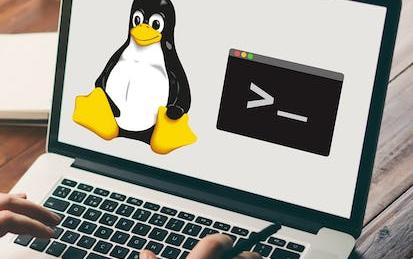
Hands-on Introduction to Linux Commands and Shell Scripting
This course provides a practical understanding of common Linux / UNIX shell commands. In this beginner friendly course, you will learn about the Linux basics, Shell commands, and Bash shell scripting. You will begin this course with an introduction to Linux and explore the Linux architecture. You will interact with the Linux Terminal, execute commands, navigate directories, edit files, as well as install and update software. Next, you’ll become familiar with commonly used Linux commands.
-
Course by

-
 Self Paced
Self Paced
-
 27 hours
27 hours
-
 English
English

Programming in Python
In this course, you will be introduced to foundational programming skills with basic Python Syntax. You’ll learn how to use code to solve problems. You’ll dive deep into the Python ecosystem and learn popular modules, libraries and tools for Python. You’ll also get hands-on with objects, classes and methods in Python, and utilize variables, data types, control flow and loops, functions and data structures.
-
Course by

-
 Self Paced
Self Paced
-
 45 hours
45 hours
-
 English
English

Start the UX Design Process: Empathize, Define, and Ideate
Start the UX Design Process: Empathize, Define, Ideate is the second course in a certificate program that will equip you with the skills needed to apply to entry-level jobs in user experience (UX) design. In this course, you’ll complete the first phases of the design process for a project that you’ll be able to include in your portfolio. You will learn how to empathize with users and understand their pain points, define user needs using problem statements, and come up with lots of ideas for solutions to those user problems.
-
Course by

-
 Self Paced
Self Paced
-
 50 hours
50 hours
-
 English
English

Social Determinants of Health: Vulnerable Populations
This second of five courses focuses on how social determinants of health affects vulnerable populations. Focusing on four groups of vulnerable populations, students will examine how social determinants of health contribute to the poor health outcomes experienced by these populations. The topics of this course include: 1. Poverty 2. Women’s Health 3. Gender and LGBTQI+ Health 4. Family Health 5. Data Applications: t-test Analysis and Box Plot Visualization
-
Course by

-
 Self Paced
Self Paced
-
 20 hours
20 hours
-
 English
English

Essential Google Cloud Infrastructure: Foundation
This accelerated on-demand course introduces participants to the comprehensive and flexible infrastructure and platform services provided by Google Cloud with a focus on Compute Engine. Through a combination of video lectures, demos, and hands-on labs, participants explore and deploy solution elements, including infrastructure components such as networks, virtual machines and applications services. You will learn how to use the Google Cloud through the console and Cloud Shell.
-
Course by

-
 Self Paced
Self Paced
-
 8 hours
8 hours
-
 English
English
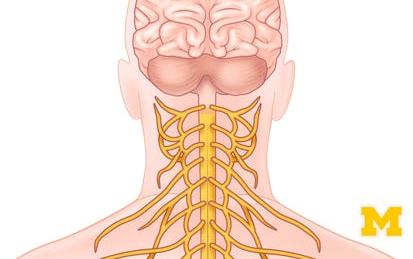
Anatomy: Human Neuroanatomy
In this anatomy course, part of the Anatomy Specialization, you will be introduced to the central and peripheral nervous systems. You will learn about basic neuroanatomy, sensory pathways, motor pathways and the autonomic nervous system. The course includes illustrated lecture videos and quizzes to help you expand and test your knowledge of the nervous system. By the end of this course, you will have a better understanding of how the entire body influences, and is influenced, by the nervous system.
-
Course by

-
 Self Paced
Self Paced
-
 17 hours
17 hours
-
 English
English

R Programming
In this course you will learn how to program in R and how to use R for effective data analysis. You will learn how to install and configure software necessary for a statistical programming environment and describe generic programming language concepts as they are implemented in a high-level statistical language. The course covers practical issues in statistical computing which includes programming in R, reading data into R, accessing R packages, writing R functions, debugging, profiling R code, and organizing and commenting R code.
-
Course by

-
 Self Paced
Self Paced
-
 57 hours
57 hours
-
 English
English

From Likes to Leads: Interact with Customers Online
From Likes to Leads: Interact with Customers Online is the third of seven courses in the Google Digital Marketing & E-commerce Certificate. This course will help you develop social media marketing strategies. Social media is a key digital marketing channel for many businesses because of the large number of people who use social platforms to socialize, interact with businesses, and share content. No digital marketing strategy is complete without an online brand presence where customers can engage with a brand.
-
Course by

-
 Self Paced
Self Paced
-
 27 hours
27 hours
-
 English
English

Ready, Set, Future! Introduction to Futures Thinking
Do you want to think about the future with more creativity and optimism? Do you want to see what’s coming faster, so you can be better prepared for disruptions and more in control of your future? Do you want to get better at changing what’s possible today – in your company, your industry, your community, and in your own life? This course will introduce you to the practice of futures thinking, as developed and applied for the past 50 years by the Institute for the Future, a Silicon-Valley-based research and learning group founded in 1968.
-
Course by

-
 Self Paced
Self Paced
-
 11 hours
11 hours
-
 English
English

Solar Energy Basics
This course gives you an introduction to the fundamentals of solar power as it applies to solar panel system installations. You will learn to compare solar energy to other energy resources and explain how solar panels, or photovoltaics (PV for short), convert sunlight to electricity. You will be able to identify the key components needed in a basic photovoltaic (solar panel) system, such as is found on a house or building, and explain the function of each component in the system.
-
Course by

-
 Self Paced
Self Paced
-
 15 hours
15 hours
-
 English
English



